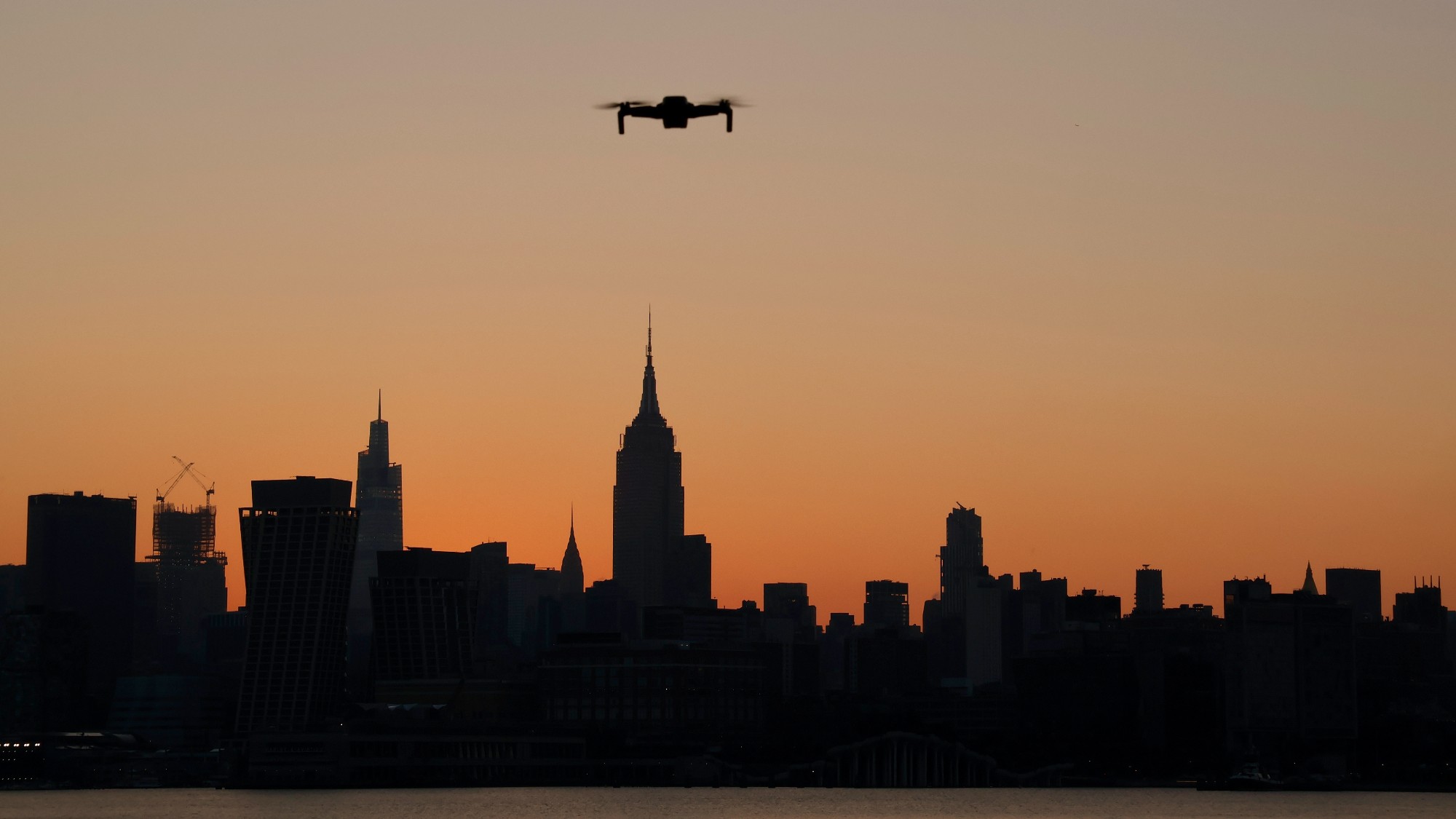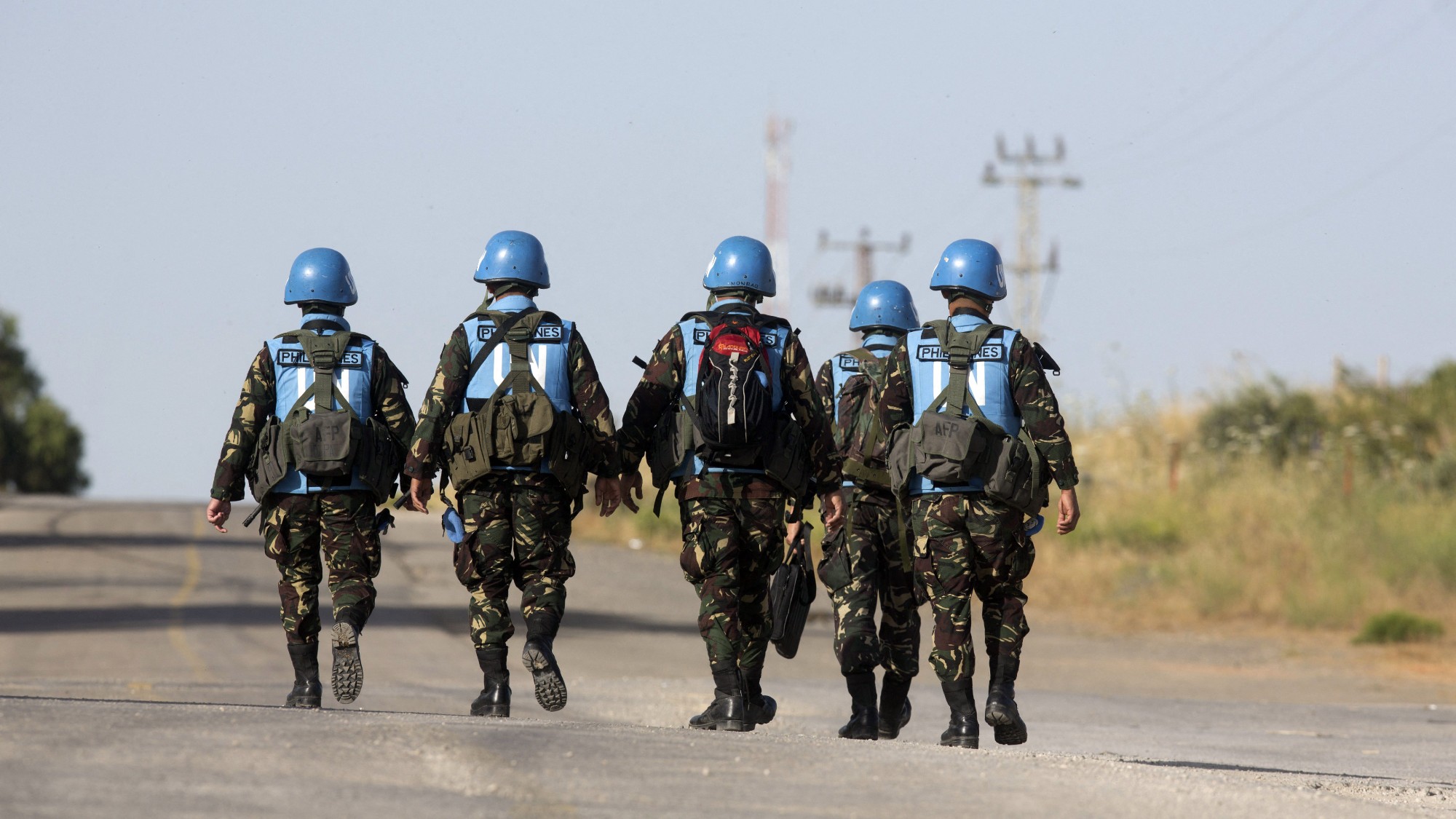The New Jersey 'UFO' drone scare
Reports of mysterious low-flying aircraft provoked outlandish theories, but old-fashioned hysteria appears to have been to blame

In 1954, a growing number of people in Bellingham, Washington, suddenly started noticing small dents and chips in their car windscreens. The damage was initially blamed on vandals, said Zeynep Tufekci in The New York Times, but as a deluge of similar complaints streamed in from car owners across the state and beyond, people sought other explanations. Some blamed cosmic rays or fallout from H-bomb tests, while others attributed it to a radio transmitter on a naval base. It turned out to be none of these things, just a simple case of mass hysteria: people were seeing long-present imperfections in their windscreens that they'd previously overlooked.
A similar dynamic has played out over the past month in New Jersey, where a spate of reports of mysterious low-flying aircraft has provoked all sorts of outlandish theories. Some have claimed that the aircraft are enemy drones launched by an "Iranian mothership" off the coast; others, that they are US federal drones searching for the radiation signature of a dirty bomb smuggled into the state.
New Jerseyans have become a little overexcited about flying objects, said Matthew Petti on Reason. Many of the reported mysterious lights in the night sky have been regular aircraft or celestial bodies. Scientists who examined a video by former Maryland governor Larry Hogan of what he said "appeared to be dozens of large drones in the sky above my residence" quickly identified the lights as stars in the Orion constellation. Still, not all of the sightings are fanciful: the US Coast Guard confirmed before Christmas that it had spotted an unexplained drone swarm off the Jersey Shore. That example alone raises concerns, if only for the safety of air traffic.
The Week
Escape your echo chamber. Get the facts behind the news, plus analysis from multiple perspectives.

Sign up for The Week's Free Newsletters
From our morning news briefing to a weekly Good News Newsletter, get the best of The Week delivered directly to your inbox.
From our morning news briefing to a weekly Good News Newsletter, get the best of The Week delivered directly to your inbox.
People have good reason to be paranoid about drones, said Neil Richards and Ryan Durrie on MSNBC. Quite apart from the potential threat they pose to national security and air traffic, there are strong privacy issues at stake with devices that are, among other things, "flying high-definition video cameras".
There are more than 1.7 million drones registered for commercial and recreational use in the US, said Max Boot in The Washington Post, and it's clear the country needs to do more to guard against their improper use. In November, the FBI arrested a Tennessee man who was allegedly plotting to use a drone loaded with explosives to attack Nashville's power grid. In October, Arizona authorities charged a teenager with planning to use a drone to bomb the Phoenix Pride festival.
The FBI and Department of Homeland Security can intercept and take down drones in some circumstances, but state and local authorities have little power to interfere with them under current law. Legislation to remedy that situation has been held up by civil liberties concerns. If the New Jersey drone scare prompts lawmakers to take belated action "against this growing threat, it will have achieved something worthwhile".
A free daily email with the biggest news stories of the day – and the best features from TheWeek.com
-
 Pakistan: Trump’s ‘favourite field marshal’ takes charge
Pakistan: Trump’s ‘favourite field marshal’ takes chargeIn the Spotlight Asim Munir’s control over all three branches of Pakistan’s military gives him ‘sweeping powers’ – and almost unlimited freedom to use them
-
 Pushing for peace: is Trump appeasing Moscow?
Pushing for peace: is Trump appeasing Moscow?In Depth European leaders succeeded in bringing themselves in from the cold and softening Moscow’s terms, but Kyiv still faces an unenviable choice
-
 The $100mn scandal undermining Volodymyr Zelenskyy
The $100mn scandal undermining Volodymyr ZelenskyyIn the Spotlight As Russia continues to vent its military aggression on Ukraine, ‘corruption scandals are weakening the domestic front’
-
 Massacre in Darfur: the world looked the other way
Massacre in Darfur: the world looked the other wayTalking Point Atrocities in El Fasher follow decades of repression of Sudan’s black African population
-
 ‘Never more precarious’: the UN turns 80
‘Never more precarious’: the UN turns 80The Explainer It’s an unhappy birthday for the United Nations, which enters its ninth decade in crisis
-
 Ukraine: Donald Trump pivots again
Ukraine: Donald Trump pivots againIn the Spotlight US president apparently warned Volodymyr Zelenskyy to accept Vladimir Putin’s terms or face destruction during fractious face-to-face
-
 Gaza’s reconstruction: the steps to rebuilding
Gaza’s reconstruction: the steps to rebuildingIn The Spotlight Even the initial rubble clearing in Gaza is likely to be fraught with difficulty and very slow
-
 Remaking the military: Pete Hegseth’s war on diversity and ‘fat generals’
Remaking the military: Pete Hegseth’s war on diversity and ‘fat generals’Talking Point The US Secretary of War addressed military members on ‘warrior ethos’


